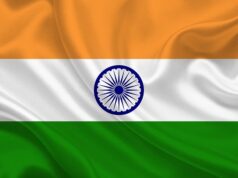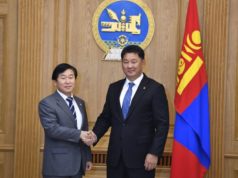Houseflies, the Soviet space program and manned missions to Mars — these aren’t plot devices for a Cold War space thriller, but key terms to understand the history behind Fukuoka-based startup Musca Inc.’s project to provide a solution to some of the world’s most pressing agricultural problems: food and animal waste and dwindling supplies of livestock feed.
As far-fetched as it may sound, the company’s plans for harnessing flies to recycle waste and create natural fertilizer and fish meal has evolved into a small but growing sector in recent years, spawning a crop of insect growers and sparking the interest of global food-production behemoths looking for alternative sources of protein.
Fast-food giant McDonald’s, for example, is backing studies using insects and algae for chicken feed to reduce reliance on soy and to hold off deforestation.
“In terms of variety, we possess G1-level flies,” says Ayano Ryugo, the interim chief executive officer of Musca, referring to the term used for horse races featuring the highest caliber thoroughbreds.
“And that’s the result of 45 years of selectively breeding 1,100 generations of flies.”
Ryugo says Musca’s technology is based on research that a Japanese man named Kazutoshi Kobayashi purchased from Soviet scientists following the collapse of the USSR. The researchers had been studying the feasibility of using houseflies to achieve self-sufficiency during manned journeys to Mars.
The idea was to have fly eggs hatch and feed on astronauts’ feces. The insects’ excrement would then be used as fertilizer and the resulting protein-rich maggots as food. The study involved selective breeding to create productive, stress-resistant flies that could reproduce and survive for years aboard a spacecraft.
Kobayashi, founder of a small trading firm specializing in Russian science technology and products, brought the knowledge back to Miyazaki Prefecture and continued breeding the insects in the belief they could be used to attain sustainable agriculture.
His ambition was handed over to one of his employees, Mitsutaka Kushima, who launched his own company in 2006 and spun off the fly-breeding project into Musca in 2016 with investment money from Fukuoka-based venture firm Bases Inc.
With Kushima as chairman, Musca is planning to begin construction of its first plant by the end of this business year in March.
Once up and running, the complex is expected to be capable of processing 100 tons of animal dung and urine daily. It aims to go global, with plans underway to franchise fully automated processing plants to interested parties.
Musca has raised around ¥170 million to date and is currently holding a new round of fundraising expected to reach several billion yen. And with a partnership agreement with an undisclosed major trading firm in place, Musca eventually hopes to go toe to toe with industry leaders, including South African fly-farmer AgriProtein Holdings Ltd. and Canada’s Enterra Feed Corp.
“The potential is enormous,” says Ryugo, who is also Musca’s de facto spokeswoman.
According to Allied Market Research, the size of the global waste management market was valued at $285 billion in 2016 and is projected to reach $435 billion by 2023.
Meanwhile, analysts at London-based research firm Technavio forecast the worldwide animal feed market to register revenue of more that $527 billion by 2022, while market research firm the Business Research Co. expects the global fertilizer market to reach over $245 billion in 2020.
Ryugo says this means Musca eyes international expansion, and thus her “interim” CEO title. The company hopes to hire global talent as senior management in the future to expand its business abroad.
And even in Japan alone, there is significant demand, she says.
“There is an estimated 80 million tons of livestock excretion being disposed of in Japan annually. If we were to process all that, we would be building 3,000 100-ton plants.”
The amount of food waste being disposed of is even larger, estimated at 360 million tons per year, she says, giving Musca, whose title is derived from the housefly’s scientific name, Musca domestica, no shortage of waste with which to make money.
Ryugo says Musca’s tuned-up flies are capable of transforming animal excreta into fertilizer in one week, compared to the three weeks it takes for natural houseflies.
Musca’s fly eggs are first sowed in trays of livestock excreta. In eight hours or so, the eggs hatch into legless white larvae that begin feeding on the excrement, decomposing it as they go.
In a week the maggots become full and crawl out of the tray. The leftover maggot excreta is collected for high-quality fertilizer, while the maggots themselves are harvested for nutritious animal feed.
Some 300 grams of fly eggs are capable of hatching 150 kg of maggots and turning 1 ton of animal feces into 300 kg of fertilizer. Ryugo says Musca could provide 1 kg of maggots for ¥100, considerably cheaper than the average of ¥150 for 1 kg of fish meal, which is facing limited supply despite growing demand.
Joint studies with Ehime University and the University of Miyazaki have shown that fish eating feed mixed with Musca’s product grew larger and were resistant to diseases. Similar statistics were collected from vegetables grown using Musca’s fertilizer.
“What’s more, neighbors won’t need to worry about odors since the entire process is conducted indoors,” Ryugo says.
Global consumption and production of meat has rapidly increased in recent decades with the expanding middle class. The Worldwatch Institute says the trend is causing harmful effects on the environment and public health, with serious implications for the world’s climate.
“Animal waste releases methane and nitrous oxide, greenhouse gases that are 25 and 300 times more potent than carbon dioxide, respectively,” it says.
Compared with that, Ryugo says Musca’s technology will cut greenhouse gas emissions by around 99 percent and prevent animal feces from contaminating groundwater.
Musca’s maggots, according to studies, are free of agricultural chemicals and are even fit for human consumption, she says, indicating they won’t introduce toxins into the food supply.
Flies and their larvae are the natural food for numerous animals, including fish, birds and mammals, but using them as livestock feed comes with a yuck factor that alarms food regulators. While Ryugo says Musca’s fertilizer and fish meal can be sold in Japan, she acknowledges that regulations in Europe, for example, could be more complicated.
But a steady population increase is expected to force an increased food and feed output from available resources, resulting in even greater pressure on the environment. The U.N. Food and Agriculture Organization says scarcities can be expected in agricultural land, water, forest, fishery and biodiversity resources, as well as nutrients and nonrenewable energy. The situation has seen insects increasingly being introduced in food systems, either directly or through animal nutrition, it says.
“It’s important for Japan since it has a low ratio of food self-sufficiency, but even more so for the world as its population continues to climb,” Ryugo says. “Musca can provide solutions to these issues.”
www.japantimes.co.jp



